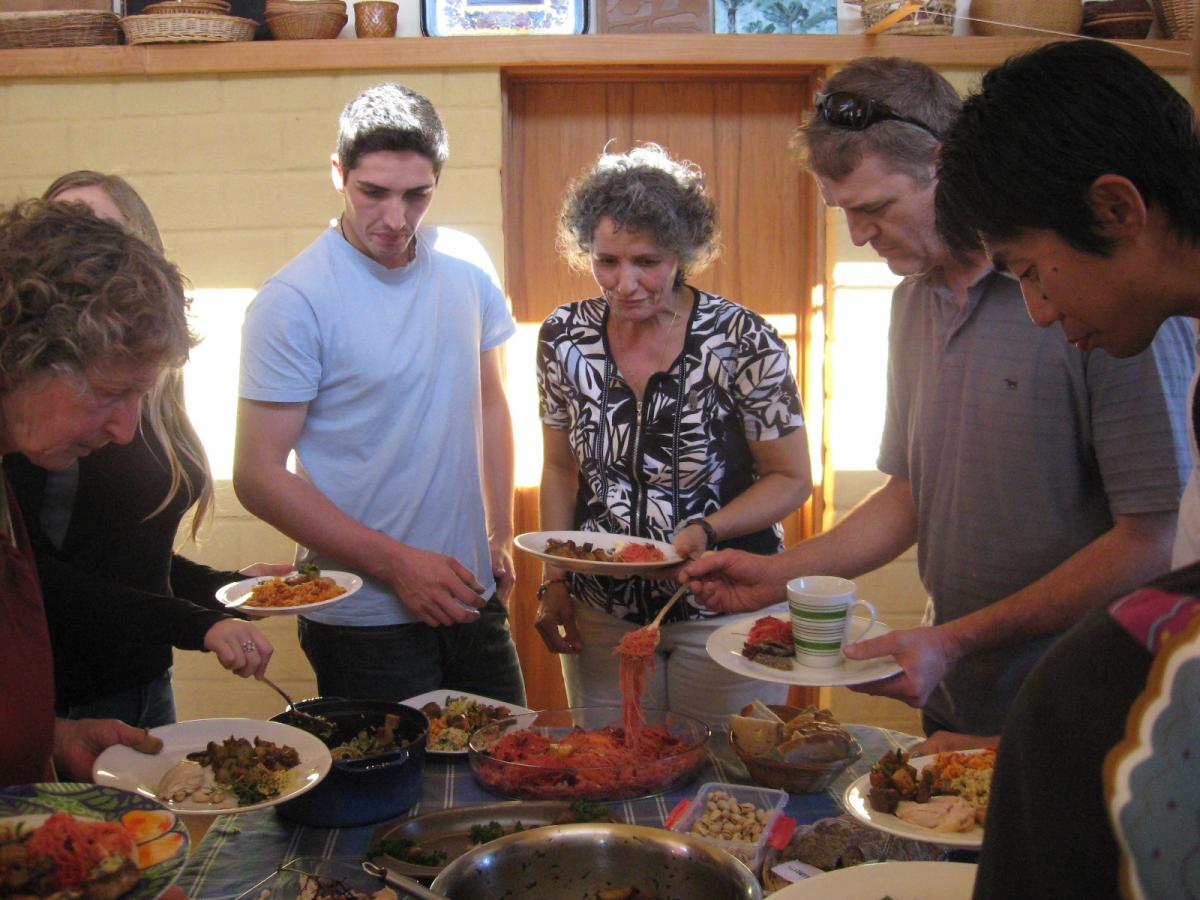|
The Permaculture Ecovillage
Rafaele Joudry
Friday, 10th July 2015
Atamai Village in New Zealand, is a permaculture designed ecovillage. The Village aim to provide for themselves entirely, from food and energy, to transport and even wine!
Jack and Joanna Santa Barbara, an active retired couple from Canada who see themselves as changemakers, moved to Atamai Village in New Zealand, shortly after its inception. Jack explains their reasons, seated in their beautiful, peaceful, solar and wood-heated house of pressed earth blocks, one of the first constructed in the village.
“We came to the realisation that the global drivers of change, climate change and energy descent, were already affecting the way people live in various parts of the world, and would eventually affect everyone – no matter where they lived, no matter how well connected or wealthy they are, or how comfortable they are now, or what their expectations may be for the future.” A psychologist, and former successful businessman, Jack took the initiative to locate a development that had all the necessary requirements for enduring sustainability.
“The location was very important,” he explains. “Our basic criteria were: a bio-capacity excess; a temperate climate; and a government with at least some semblance of parliamentary democracy. A quick scan of the globe made us realize how few places on the planet meet even these simple criteria.
“Once identified, we realized that New Zealand also had the benefits of being relatively isolated geographically. New Zealand is also the poorest of the OECD (Organisation for Economic Co-operation and Development) nations. That might seem like a strange feature to list as desirable, but to us, it meant a country with less physical infrastructure to maintain after energy descent, and a population accustomed to living well with less (both positive features). Plus, Joanna’s Australian citizenship made it easier for us to immigrate.
"We came across Atamai Village and thought, ‘A whole village designed on permaculture? What a great idea!’"
Atamai Village, situated near the small town of Motueka, at the top of the South Island, was founded eight years ago and now has about 20 families in residence. The Village currently has about 60 freehold titles approved by the local council, most of which have room for a minor unit or granny flat. The development is also incorporating plans for co-housing, which could include several families sharing a site. The long term vision is for a total population of approximately 300 people, which is on the low side for a traditional village but is considered in the ideal range for social cohesion.
The whole project has been designed with resilience and sustainability in mind. Based on the concept of a traditional village, Atamai aims to meet many of its needs for food, energy, goods and services within the village. In this way livelihoods can be provided while massively reducing the amount of transport in and out of the village, and therefore its carbon footprint.
“We did not see this as establishing a bolt hole for ourselves, but rather as an opportunity to contribute to something worthwhile from which our children and grandchildren, as well as others, could benefit,” says Jack. “Given that we were in our 60s when we made this move, we really didn’t see it as doing it just for ourselves. At our age it didn’t matter, and it would have been a lot easier to stay put. But being retired, we had the resources and energy to make the move.”
The Santa Barbara home
Village Concepts
Permaculture is spreading around the world, being applied to gardens, patios, homesteads and farms, creating a new way of living in harmony with nature and each other. We become participants in the design of effective, nurturing ecosystems, instead of raiders who take from the system with little regard for its ongoing integrity.
The concept of a permaculture village is a natural process to take this design intention to the next level of human settlement, beyond the farm, to the village level. Village design opens many more opportunities, allowing us to build infrastructure, catchment management and human interactions into the overall plan.
The developer for the project, managed by some of the residents, holds the vision of creating a traditional village with new, sustainable designs and technology. In keeping with the village concept, the building code includes principles of using local materials, passive solar design, onsite rainwater catchment, with land connected by cycleways, walkways and extensive common areas.
A key feature of most traditional villages is land owned and managed collectively. This feature has been incorporated into the Atamai Village design with approximately half of all village land constituting the Commons. These ‘Commons’, in the traditional sense, are intended for productive activities by the villagers. Already the Commons include a productive orchard, with the neighbouring farm and vineyard pegged to become part of the Commons once the village is fully established.
Communal eating
The Power of Consensus
Joanna has been very involved in the social life of the village and explains how they are developing models of self-governance and support for human needs. While keeping an eye on the cake she is baking in her wood-fired oven, she talks about her passion for consensus and good group process.
“Pretty early on, as a community, we realised we needed to pay attention to the way we did things together, both in relation to the way we conducted our meetings together, so they were efficient and pleasant, and also how we deal with conflicts in a constructive way,” she explains. Joanna has been part of three different committees which were evolved to manage the social and community interactions.
“The process of how we do our consensus decision making is an ongoing interest of mine and a concern of the Process Group,” she says. “We worked on some data that was gathered from European intentional communities where consistent blockage of consensus could be very destructive, and people were evolving ways of getting past persistent blockage that had that destructive quality. So the question was, ‘Should we apply that to our own community?’” Joanna explains that the concept of consensus, and of an individual being able to block consensus, is really quite an important one, and it’s quite a precious principle to protect, so any variation from that principle has to be considered extremely carefully.
“We did evolve a way around, one might say, ‘persistent unprincipled blocking’, but it took some time,” she says. “We had to talk through it very carefully to work out proportionality between preserving the principle of highly valuable consensus with the possibility of individual blocking, versus the principle of being able to get past destructive persistent blocking.”
Joanna then explains how the Land Stewardship Group makes decisions about looking after the Commons, planning working bees and making sure the orchard is correctly managed.
Thirdly, there is the Health and Sustainability Group. “That is a group that focuses on human and community health, but with a view to health in our healthy ecosystem. It’s a broad definition of health.”
She gives an example of the topics this group addresses. “We sometimes talk about the wellbeing of individual people within the community – people who may have a particular need or whose health may not be optimal, and may need assistance in child care, in cooking, in taking walks, in just being not alone – so that group is having a look at what we call the ‘wellbeing of community members.’”
Joanna explains that this group has also been working on how the villagers get themselves around. “We’ve done a recent survey of our use of fossil fuelled transport, family by family, with a view to both cutting back on our use of cars, and increasing our use of walking and cycling and car-pooling, and eventually car sharing.”
She shares how this awareness has already changed behaviour in the village. “For example. I needed to go to town this morning, so my first move was to consult a little calendar of regular drives and see who was going in today, so I drove down with Kyoko. In fact the car was full! She was driving her son and another child to school, another mother to shop, and me for my appointment. So as well as achieving one less drive to town, we also experienced a very pleasant social time together, and she may benefit from having a little contribution to her car costs. So that’s an outcome of that group attending to transport as a health issue.”
When I ask if they ever regret moving there, Joanna says with a strong and gracious emphasis, “Oh no!” She adds, “Despite leaving a lot, and despite missing our grandchildren who we left behind – and that’s a real and poignant pang – the good things about being here are very strongly experienced by me. I never regret having made the move. But of course some of that is also about why we’re here – what we envision for the future – what it has to do with those we left behind, what it has to do with one’s duty to be a citizen of the world, all of that is in why I feel very positive about being here.”
Applying Permaculture to Viticulture
Atamai Village Wines is operated by Kohei and Kuniko Koyama. An international couple, they are originally from Japan, and have lived in London and Christchurch, where they moved prior to the Motueka region so Kohei could study viticulture and wine making. Their daughter attended the large Steiner school there, as she had been at the Steiner school in Tokyo.
“I used to work in the financial industry” said Kohei, “but for that you have to be in big cities like London, Sydney, Hong Kong or Tokyo. We always had a long time passion to live in a rural area.”
They had left Japan after an earthquake and moved to Christchurch where they found the people had an appreciation of their experience, after the recent earthquakes in Christchurch. “Even though they went through a very tough period, they were very kind to us,” they said.
Kohei and Kuniko had looked at several ecovillages, which led them finally to Atamai, where they found similar values and visions to their own. Kuniko had grown up in a rural area and was used to living in a communal way. “I was interested in a much more sustainable way of living” she said, “but with just your family you cannot do much.”
Following organic and permaculture principles, now into their second season, the couple are making a success of the winery where they produce Sauvignon Blanc, Pinot Gris and Riesling. Kohei is passionate about the way they can apply permaculture principles to their vineyard together with Atamai.
The Village wine harvest
“To grow using permaculture methods is an indispensable factor in having a unique product that reflects our values.”
He explained some of the specifics of this. “Bob, who runs Te Mara Farm in the village, makes compost with all the grape skins produced when I make wine. He can make compost out of my grapes. I can grow grapes out of his compost. This is a sustainable cycle. And during winter it’s common practice to put sheep into the vineyard so you don’t have to use any petrol to mow. On the farm Bob has several hundred sheep. He always needs a paddock for his sheep. So he can feed his sheep in my vineyard and provide natural fertiliser for the vines. This is a great partnership. Then the villagers can help with the grape picking and they can drink wine and eat sheep. It’s a positive cycle!”
A common thread among all the residents is they say they love living at Atamai and wouldn’t want to live anywhere else. The community has the vision of reaching beyond its own boundaries and becoming a model and an education centre for principles of sustainability in the bioregion. All residents are required to undertake a permaculture course, and the village is about to host its second PDC (Permaculture Design Certificate). They have also offered workshops on juggling, singing, homekill, and various forms of sustainable food production and preservation, with much more to come in the future.
| 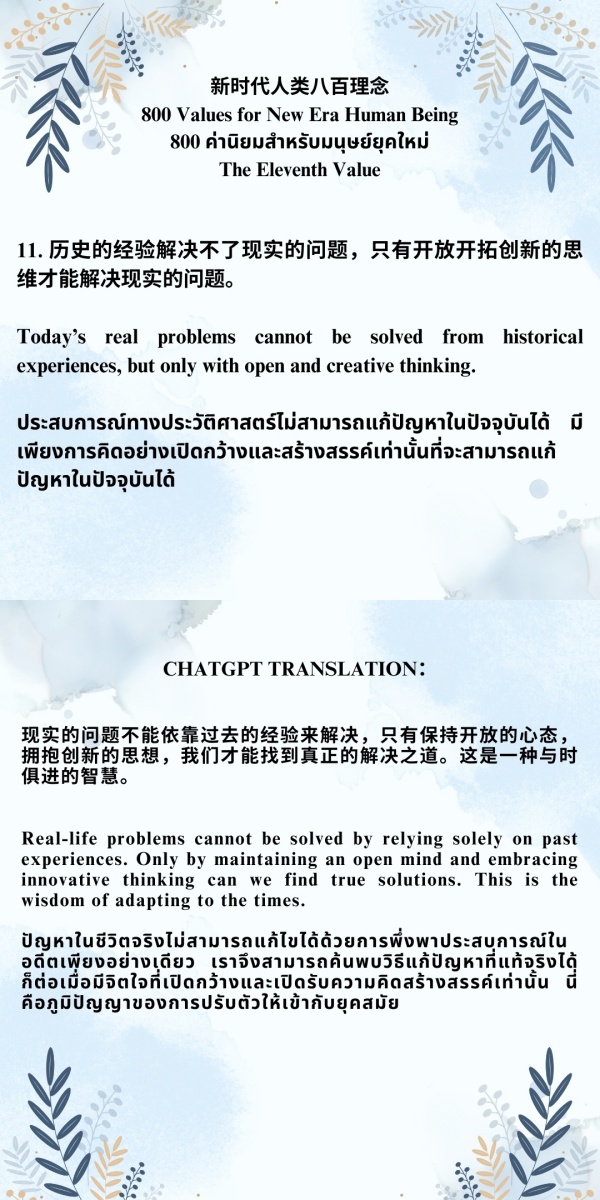 Value 11 of 800 Values for New Era Humans+ ChatGPT Translation
[youtube]ysEi_eF
Value 11 of 800 Values for New Era Humans+ ChatGPT Translation
[youtube]ysEi_eF
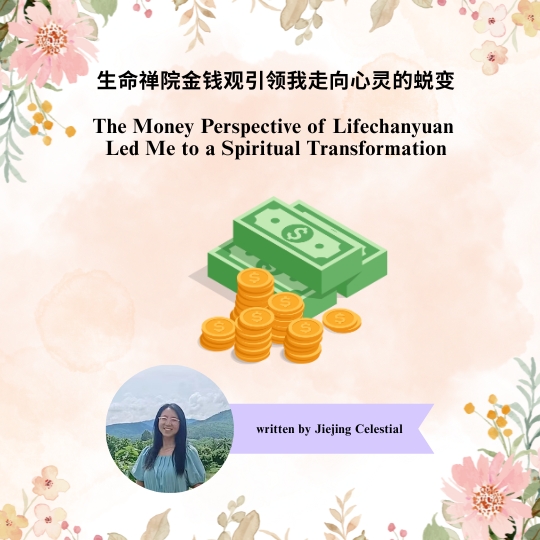 The Money Perspective of Lifechanyuan Led Me to a Spiritual Transformation
Jiej
The Money Perspective of Lifechanyuan Led Me to a Spiritual Transformation
Jiej
 The Magical yet Simple Life in the Second Home – Welcoming Two Friends from the
The Magical yet Simple Life in the Second Home – Welcoming Two Friends from the
 4 Questions from an American Visitor, Guy, About My Life in Lifechanyuan Thailan
4 Questions from an American Visitor, Guy, About My Life in Lifechanyuan Thailan
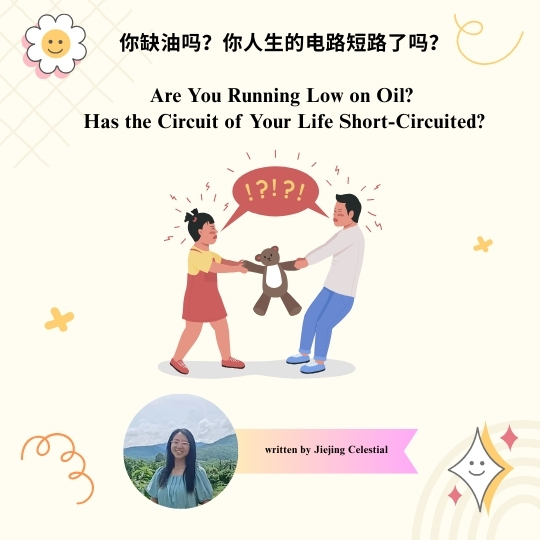 Are You Running Low on Oil? Has the Circuit of Your Life Short-Circuited?
Jieji
Are You Running Low on Oil? Has the Circuit of Your Life Short-Circuited?
Jieji
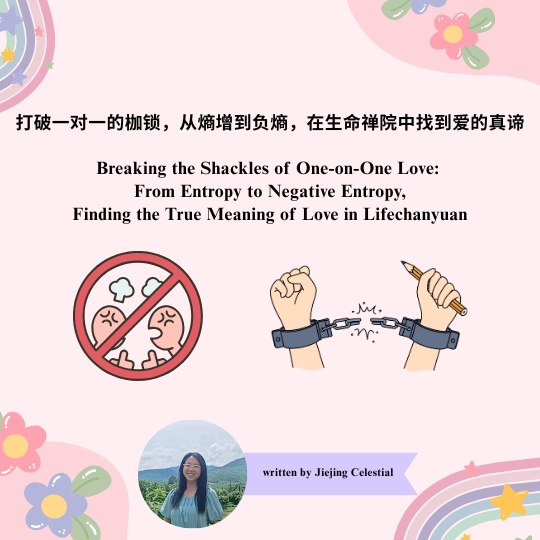 Breaking the Shackles of One-on-One Love: From Entropy to Negative Entropy, Find
Breaking the Shackles of One-on-One Love: From Entropy to Negative Entropy, Find


 Post time 2017-10-30 14:19:41
Post time 2017-10-30 14:19:41



